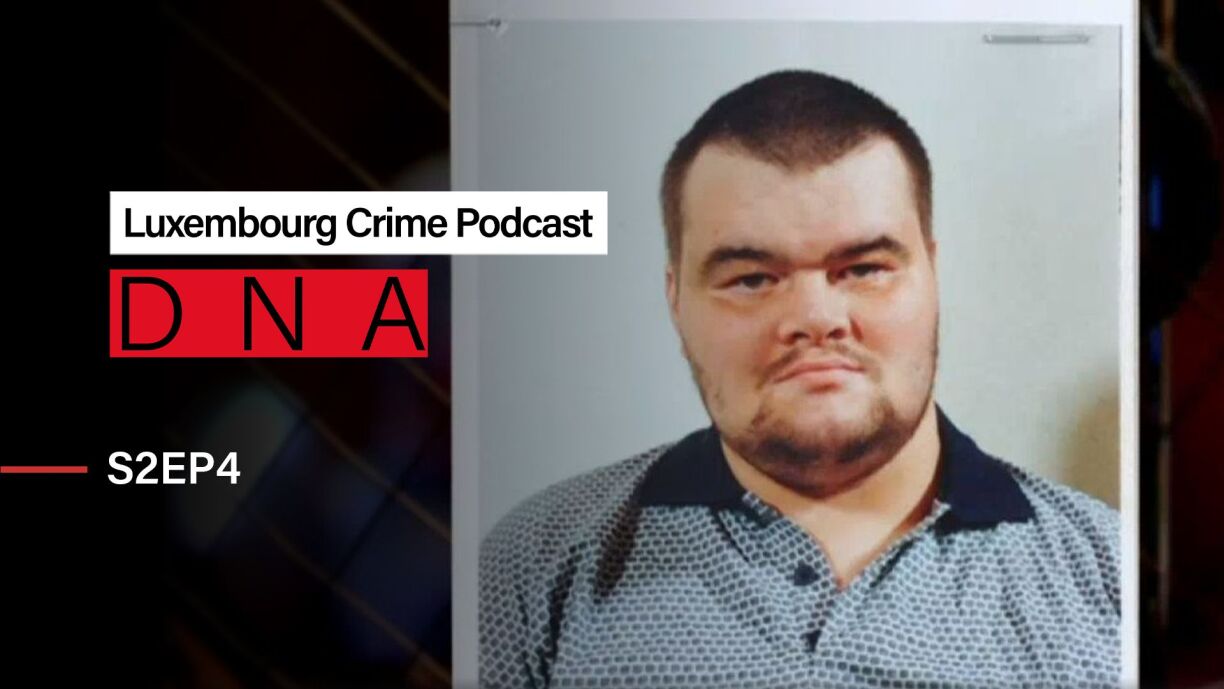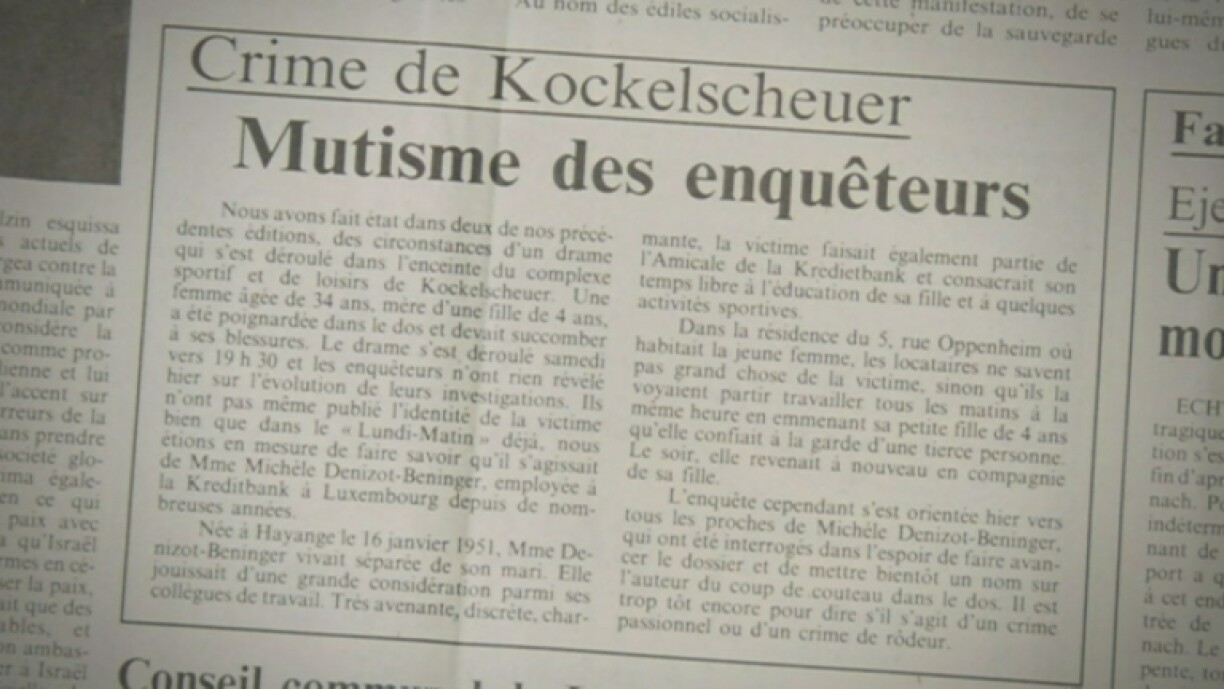
It was around 40 years ago that Louis began murdering and attacking women at random in central and southern Luxembourg, and across the border in Trier. Not only did authorities fail to provide the necessary support structures to the victims and their families, but they also failed to arrest the killer early on, despite signs he had severe issues.
Listen to DNA – Luxembourg Crime Podcast:
Between 1983 and 1989, Louis murdered three women and attacked four others.
On 9 March 1985, Michèle D. was walking through the car park when she got attacked from behind. Louis forced her into her own car, and told her to start driving out of the city. After coming to a standstill near Kockelscheuer, she attempted to flee, but her killer caught up to her. He stabbed her in the back. Michèle still managed to rush to a nearby restaurant and alert the owner, but all help came too late. Colette B., who was working a shift at the restaurant, was in shock: “She was at the wrong place at the wrong time”, Colette later said to RTL.
Just six weeks later, on 27 April, Marguerite B. was taking a walk down a path to the centre of Schifflange when a man came at her from the bushes. The man dragged her to the ground, shot her in the head and stabbed her numerous times. It would later turn out to have been Louis. The 59-year-old woman was found at 4pm, her belongings taken from her.
Former judge Eliette Bauler recalls one particular detail: “He had placed a canola flower on her face. When I asked him why, he said he could not look into her dead eyes.” The neighbourhood is in shock about the murder, and for a moment Marguerite’s son is seen as the presumed attacker, as he works in a butchery in Dudelange and the murder weapon matches the tools he owns. Police later believe the neighbour, another young woman, may have been Louis’ actual target.
Louis returned to the Gare car park on 22 June, 1985. Rosanna C. was making her way back to her car, but when she opened the door between the stairway and the parking floor, Louis stormed out with a knife, pinning her to the ground.
“I immediately thought my life was over”, she recalls. He dragged her up stairs and got on top of her, the more she screamed for help, the more he threatened to kill her. Eventually she managed to calm her attacker down, but who then said to her: “I’m taking you to Kockelscheuer, a car is waiting there for you, where you’ll be sold.”
He tied her to the staircase at the top of the car park, then left her to grab some belongings. Rosanna managed to free herself, but was scared to take the lift down, afraid Louis would stop it on a floor in-between. After alerting police, a patrol spotted Louis walking across the bridge.
Clearly criminal protection was stronger than victim assistance, and too little attention was paid to supporting the families of victims, because “I was longer at the police station than Louis”, recalls Rosanna. “I was left alone.” He was not arrested. Later, Rosanna spotted Louis in town. “I will never forget his face.” She kept seeing him over and over again.

Old friends of Louis say he was not aggressive as a young man, but lived a bit in his own world. He had a good sense of humour and performed well in his job, and had no visible problems. He lived a rather solitary life with few friends, but was often bullied, even by his own mother, he would later say to investigators.
Even though he had an interest in weapons, nothing pointed towards any criminal activity. To this day, Louis’ mother does not understand how he could have committed such a crime. His friends also have no explanation. “There was no signal that Louis would do something bad”, says an anonymous friend.
Louis was frequently asking for help. He visited a psychologist four times, but was deemed fit enough to go home. His problems were not seen as severe.
In September that year, Louis assaulted a young woman in Limpertsberg, who managed to flee. One year later, he brutally assaulted a woman in Trier, and in the winter of 1989 Louis attacked another woman in Limpertsberg. In November of 1989, the body of a woman was found in a kiosk on Avenue de Luxembourg in Käerjeng. She was brutally murdered with an axe.
Amid all these murders, Louis continued his day job and life in Luxembourg. He wrote an anonymous letter to the Luxemburger Wort saying he had killed four women, saying he is a troubled man but nobody ever helped him. Journalists passed the letter on to investigators, who seem surprised as only three murders are known.
Police took Louis in for questioning after he told police he witnessed the murder in Käerjeng. Piece by piece, the puzzle fell into place. Louis was responsible for the killings and attacks, but to this day the fourth murder could not be identified.
During the court case in 1992, psychiatrists were called in to see whether Louis could be considered sane, as he otherwise would receive a reduced sentence. He was indeed considered insane and slapped with a life sentence with forced labour. Although he was aware his actions were wrong, he did not feel any guilt.
“The trial was his moment. It was showtime for Louis”, says the anonymous friend. Louis recounted the gruesome murders with harrowing detail. He was a central figure and seemed to enjoy the focus.
Rosanna, one of the victims who was attacked, also attended the trial. She says she needed to be present to close off the chapter for her. His presence was cold, she said, but at some point she started to feel sorry for him. For how he was mistreated and bullied as a child, including by his mother, and that nobody helped him with his problems. “He was a monster. In my eyes, he was a monster.”
Louis died of cancer after 19 years at Schrassig prison.